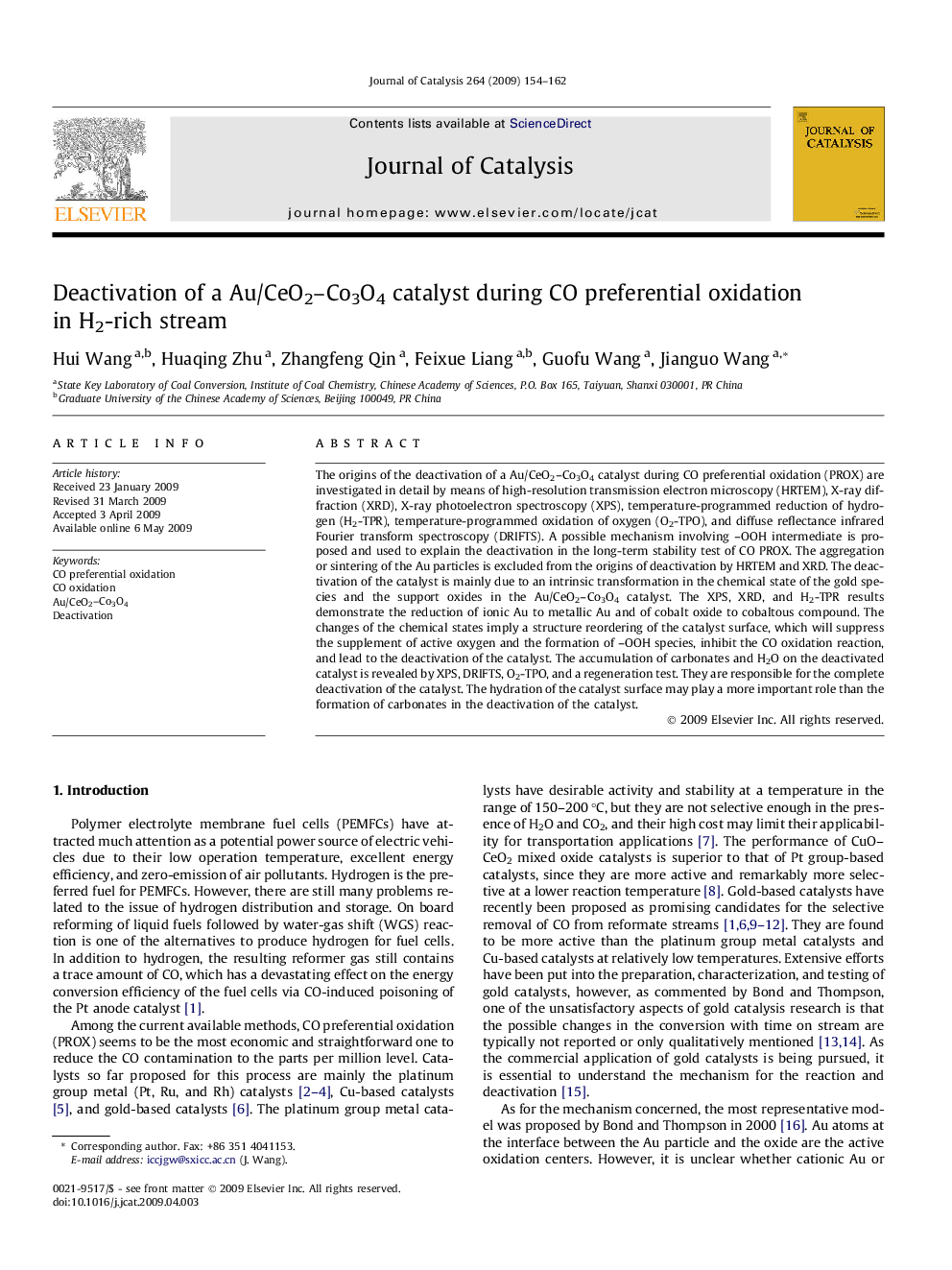| کد مقاله | کد نشریه | سال انتشار | مقاله انگلیسی | نسخه تمام متن |
|---|---|---|---|---|
| 62210 | 47627 | 2009 | 9 صفحه PDF | دانلود رایگان |

The origins of the deactivation of a Au/CeO2–Co3O4 catalyst during CO preferential oxidation (PROX) are investigated in detail by means of high-resolution transmission electron microscopy (HRTEM), X-ray diffraction (XRD), X-ray photoelectron spectroscopy (XPS), temperature-programmed reduction of hydrogen (H2-TPR), temperature-programmed oxidation of oxygen (O2-TPO), and diffuse reflectance infrared Fourier transform spectroscopy (DRIFTS). A possible mechanism involving –OOH intermediate is proposed and used to explain the deactivation in the long-term stability test of CO PROX. The aggregation or sintering of the Au particles is excluded from the origins of deactivation by HRTEM and XRD. The deactivation of the catalyst is mainly due to an intrinsic transformation in the chemical state of the gold species and the support oxides in the Au/CeO2–Co3O4 catalyst. The XPS, XRD, and H2-TPR results demonstrate the reduction of ionic Au to metallic Au and of cobalt oxide to cobaltous compound. The changes of the chemical states imply a structure reordering of the catalyst surface, which will suppress the supplement of active oxygen and the formation of –OOH species, inhibit the CO oxidation reaction, and lead to the deactivation of the catalyst. The accumulation of carbonates and H2O on the deactivated catalyst is revealed by XPS, DRIFTS, O2-TPO, and a regeneration test. They are responsible for the complete deactivation of the catalyst. The hydration of the catalyst surface may play a more important role than the formation of carbonates in the deactivation of the catalyst.
The catalyst loses its activity at various rates in the different periods of the CO PROX process, implying that the origins of deactivation are different.Figure optionsDownload high-quality image (130 K)Download as PowerPoint slide
Journal: Journal of Catalysis - Volume 264, Issue 2, 10 June 2009, Pages 154–162